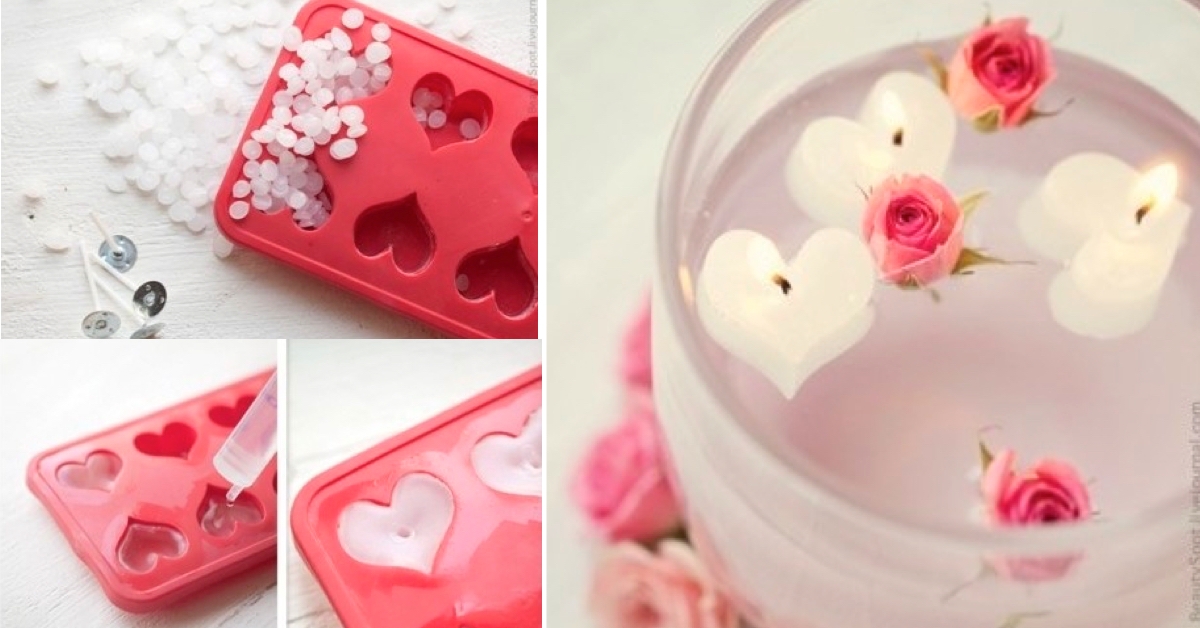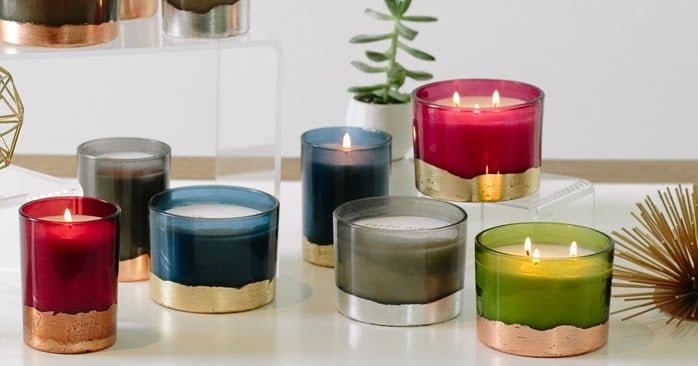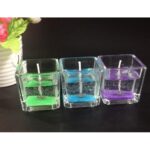Are you looking for a creative and rewarding hobby to try at home? Look no further than simple candle making at home.
Making candles can be a fun and fulfilling activity that not only allows you to customize your own scents and designs but also serves as a practical and thoughtful gift-giving option. In this article, we will explore the step-by-step process of creating your own candles from the comfort of your own home, along with the essential materials and tools needed to get started.
Candle making has been around for centuries and has evolved from a necessity to an enjoyable craft. Whether you’re a beginner or an experienced crafter, there are numerous benefits to making candles at home.
Not only can it be a relaxing and therapeutic activity, but it also provides an opportunity for self-expression through various colors, scents, and designs. Additionally, homemade candles can serve as unique decorations for any room in your home or as personalized gifts for friends and family.
Before delving into the step-by-step instructions for creating simple candles at home, it’s important to gather the essential materials and tools necessary for the candle making process. From wax to wicks and containers, there are several key items needed to get started on your candle making journey. By understanding what is required beforehand, you can ensure a smooth and enjoyable experience in crafting your own homemade candles.
Benefits of Making Candles at Home
Making candles at home can be a rewarding and enjoyable hobby, with numerous benefits that go beyond just having a new decorative item for your home. Here are some of the key benefits of making candles at home:
Customization
One of the main benefits of making candles at home is the ability to customize them according to your preferences. Whether you want a specific scent, color, or size, you have full control over how your candles turn out. This level of personalization allows you to create unique and one-of-a-kind candles that reflect your individual style and taste.
Cost-Effective
Another advantage of making candles at home is the cost-effectiveness compared to buying them from stores. By purchasing materials in bulk and reusing containers, you can significantly reduce the cost per candle. This makes candle making an economical option, especially if you enjoy burning candles regularly.
Therapeutic Benefits
Many people find the process of making candles to be therapeutic and relaxing. It allows for a creative outlet and can serve as a form of stress relief. Additionally, the soothing scents and gentle glow of homemade candles are known to create a calming atmosphere, contributing to a sense of relaxation and well-being in your home.
Overall, the benefits of making candles at home extend far beyond just creating beautiful decorative items. From customization and cost-effectiveness to therapeutic benefits, it’s clear that simple candle making at home has much to offer for hobbyists and enthusiasts alike.
Essential Materials and Tools for Candle Making
When it comes to making your own candles at home, having the right materials and tools is essential. Here are some of the key items you’ll need to get started with simple candle making at home.
Materials
The main ingredient in any candle is the wax. There are several types of wax to choose from, including soy wax, paraffin wax, beeswax, and gel wax.
Each type of wax has its own unique properties and characteristics, so it’s important to choose the right one for your specific needs. You’ll also need candle wicks, which come in various sizes and materials, as well as fragrance oils and dyes if you want to add scent and color to your candles.
Tools
In addition to the materials mentioned above, there are a few tools that are indispensable for candle making at home. These include a double boiler or melting pot for melting the wax, a thermometer to monitor the temperature of the wax, a heat source such as a stove or hot plate, a pouring pot for transferring the melted wax into molds or containers, and molds or containers for shaping the candles.
Other Considerations
While not absolutely necessary, having a scale for measuring ingredients and a dedicated workspace for candle making can also be helpful. It’s important to keep in mind that working with hot wax can be dangerous if proper precautions aren’t taken, so having safety equipment such as gloves and goggles on hand is highly advisable.
By ensuring that you have all of these essential materials and tools ready before you begin your simple candle making at home journey, you’ll set yourself up for success with this enjoyable hobby.
Step-by-Step Instructions for Making Simple Candles at Home
Making candles at home can be a fun and rewarding experience. Not only do you get to create your own customized candles, but you also have the satisfaction of knowing that you made them yourself. Here are some step-by-step instructions for making simple candles at home:
- Set up your workspace: Choose a clean and well-ventilated area to work in. Cover the surface with newspaper or a disposable tablecloth to protect it from any spills or drips.
- Prepare your materials: Gather all the essential materials and tools for candle making, including wax, wicks, containers, a double boiler or melting pot, a thermometer, fragrance oils (optional), and dye (optional).
- Melt the wax: Use a double boiler or melting pot to melt the wax flakes or blocks. Keep an eye on the temperature using a thermometer to ensure that the wax reaches the right melting point.
- Prepare the wicks and containers: While the wax is melting, prepare the wicks by attaching them to the bottom of the candle container using hot glue. Make sure the wick is centered in the container and straight.
- Add fragrance and color (optional): Once the wax has melted, you can add fragrance oils and dye if desired. Stir gently to ensure that they are evenly distributed throughout the wax.
- Pour the wax: Carefully pour the melted wax into the prepared containers, ensuring that you leave some space at the top. Allow the candles to cool and harden completely before trimming the wick.
Following these simple steps can help you create beautiful homemade candles that you can enjoy or give as personalized gifts to friends and family. Whether you prefer scented or unscented candles, experimenting with different fragrances and colors can make each candle unique and special.
Remember that practice makes perfect when it comes to simple candle making at home. Don’t be afraid to get creative and try out new techniques to find what works best for you. With time and experience, you’ll become more confident in your candle-making skills and may even develop your own signature style.
Different Types of Wax and Their Uses
When it comes to making candles at home, choosing the right wax is essential for a successful outcome. There are several types of wax that can be used for candle making, each with its own unique characteristics and uses.
One of the most popular waxes for candle making is soy wax, which is derived from soybean oil. Soy wax is known for its clean burn and ability to hold fragrance well, making it a great choice for scented candles. It also has a lower melting point, which means it can produce a longer-lasting candle.
Another common type of wax is beeswax, which has a natural golden color and a subtle honey scent. Beeswax candles are known for their clean burn and long-lasting flame. They also have air purifying properties, making them a popular choice for eco-friendly candle makers.
Paraffin wax is another option that is widely used in candle making. It is known for its ability to hold color and fragrance well, resulting in vibrant and highly scented candles. However, it is important to note that paraffin wax is derived from petroleum, so some people prefer to avoid it due to environmental concerns.
| Wax Type | Characteristics |
|---|---|
| Soy Wax | Clean burn; holds fragrance well; lower melting point |
| Beeswax | Natural golden color; subtle honey scent; clean burn; air purifying properties |
| Paraffin Wax | Holds color and fragrance well; derived from petroleum |
These are just a few examples of the many types of waxes available for candle making. Each type has its own unique qualities that make them suitable for different kinds of candles based on your preferences and needs when creating simple candles at home.
Adding Fragrance and Color to Your Candles
When it comes to making your own candles at home, adding fragrance and color can take your creations to the next level. Whether you prefer a subtle scent or a burst of fragrance, and whether you want vibrant colors or more natural hues, there are plenty of options for customizing your homemade candles.
To add fragrance to your candles, you will need essential oils or candle fragrance oils. These are concentrated scents specifically designed for candle making. There are numerous scents available, from floral and fruity to spicy and woodsy. It’s important to follow the recommended usage guidelines for each specific fragrance oil as adding too much can affect the burn and scent throw of your candle.
Coloring your candles is another fun way to personalize them. You can use liquid dyes specifically made for candle making, which come in a wide range of colors. Another option is using natural coloring agents such as dried flowers, spices, or even crayons (although these are not as recommended). Keep in mind that different types of wax may require different amounts of dye to achieve the desired color intensity.
Here’s a simple step-by-step guide on how to add fragrance and color while making candles at home:
- Select your desired scent and colorants.
- Measure out the appropriate amount based on the quantity of wax you will be using.
- Add the fragrance oil or essential oil into the melted wax at the recommended temperature.
- If using dye, gently stir it into the melted wax until fully combined.
- Pour the colored and scented wax into your chosen candle mold or container.
- Allow the candles to cool completely before trimming the wick and lighting them.
By following these simple steps, you can enjoy not only beautiful but also fragrant homemade candles that will fill your space with delightful aromas while adding a pop of color to your decor.
Safety Tips for Candle Making at Home
Making candles at home can be a fun and rewarding hobby, but it is important to prioritize safety throughout the process. Here are some essential safety tips to keep in mind when making your own candles:
1. Use a dedicated workspace: Designate a specific area in your home for candle making. This will help minimize the risk of accidents and keep potentially hazardous materials away from children and pets.
2. Follow instructions carefully: Whether you are melting wax, adding fragrance oils, or pouring the hot liquid into molds, it’s crucial to follow the instructions provided with your candle making materials. Failure to do so could lead to accidents or subpar results.
3. Handle hot wax with caution: Hot wax can cause serious burns if not handled properly. Always use heat-resistant gloves and handle hot wax carefully to avoid accidental spills or splashes.
It’s important to remember that while candle making can be an enjoyable and fulfilling activity, safety should always come first. By following these simple safety tips, you can create beautiful homemade candles without putting yourself or others at risk.
Creative Ideas for Decorating and Packaging Your Homemade Candles
Decorating and packaging homemade candles is a fun and creative part of the candle making process. Giving your candles a personal touch not only adds to their beauty but also makes them great for gifting or selling. There are various creative ideas for decorating and packaging homemade candles that can make them stand out.
One simple yet effective way to decorate your homemade candles is by using natural elements such as dried flowers, herbs, or even citrus peels. These can be added to the surface of the candle or embedded within the wax for a unique and visually appealing look. Another option is to use colorful ribbons, fabric scraps, or decorative twine to tie around the candle jars or molds, adding a pop of color and texture.
When it comes to packaging, consider using eco-friendly materials such as kraft paper, cardboard boxes, or reusable containers. You can also personalize your candle labels with custom designs, hand-written messages, or even photos. This not only adds a special touch but also lets you showcase your brand if you plan on selling your homemade candles.
For a more luxurious feel, consider investing in high-quality packaging materials such as frosted glass jars, elegant gift boxes, or satin ribbons. These options can elevate the overall presentation of your homemade candles, making them perfect for special occasions or premium gifting. Remember that creative ideas for decorating and packaging your homemade candles are endless; let your imagination run wild and have fun experimenting with different styles and materials.
Conclusion and Final Tips for Successful Simple Candle Making at Home
In conclusion, making candles at home can be a rewarding and enjoyable hobby that also offers numerous benefits. Not only does it allow you to create customized candles to suit your preferences, but it also serves as a therapeutic and creative outlet. By using the essential materials and tools for candle making, following the step-by-step instructions, and practicing safety tips, you can successfully craft beautiful candles right in the comfort of your own home.
When it comes to choosing the type of wax for your candles, it’s important to consider the different options available and their specific uses. Whether you opt for soy wax, beeswax, or paraffin wax, each type has its own unique properties that can affect the burning time and scent throw of your homemade candles.
Furthermore, adding fragrance and color to your candles allows you to personalize them according to your preferences. Whether you prefer floral scents or vibrant hues, there are endless possibilities for creating one-of-a-kind candles that reflect your personal style.
Finally, once you have mastered the art of simple candle making at home, you can explore creative ideas for decorating and packaging your homemade candles to give them as gifts or add a touch of charm to your living space.
So why not give it a try? Start exploring the art of candle making today.
Frequently Asked Questions
How Do You Make Easy Homemade Candles?
Making easy homemade candles can be a fun and simple DIY project. Start by gathering the necessary materials: wax, wicks, a heat-resistant container, a double boiler, fragrance oils (optional), and coloring agents (also optional).
Melt the wax in the double boiler, add any fragrance or color if desired, place the wick in the container, and carefully pour the melted wax into the container. Allow it to cool and solidify before trimming the wick and lighting the candle.
What Are the Ingredients in Simple Candles?
The basic ingredients for simple candles include wax (such as soy wax or paraffin wax), wicks, fragrance oils (optional), and coloring agents (also optional). The choice of wax will depend on personal preference and availability.
Wicks come in various sizes depending on the diameter of your candle container. Fragrance oils can be added to give your candle a pleasant scent, while coloring agents can be used to achieve your desired color.
How Do You Make Candles for Dummies?
Making candles for dummies involves following straightforward steps to create your own homemade candles. Begin by choosing a suitable container for your candle – something heat-resistant is essential. Then, gather your supplies: wax, wicks, fragrance oils (if desired), coloring agents (if desired), and a double boiler for melting the wax.
Melt the wax in the double boiler, adding fragrance or color if you wish. Once melted, carefully pour it into the container with the wick already placed inside. Allow it to cool and solidify before trimming the wick and lighting your new candle.

Welcome to my candle making blog! In this blog, I will be sharing my tips and tricks for making candles. I will also be sharing some of my favorite recipes.





